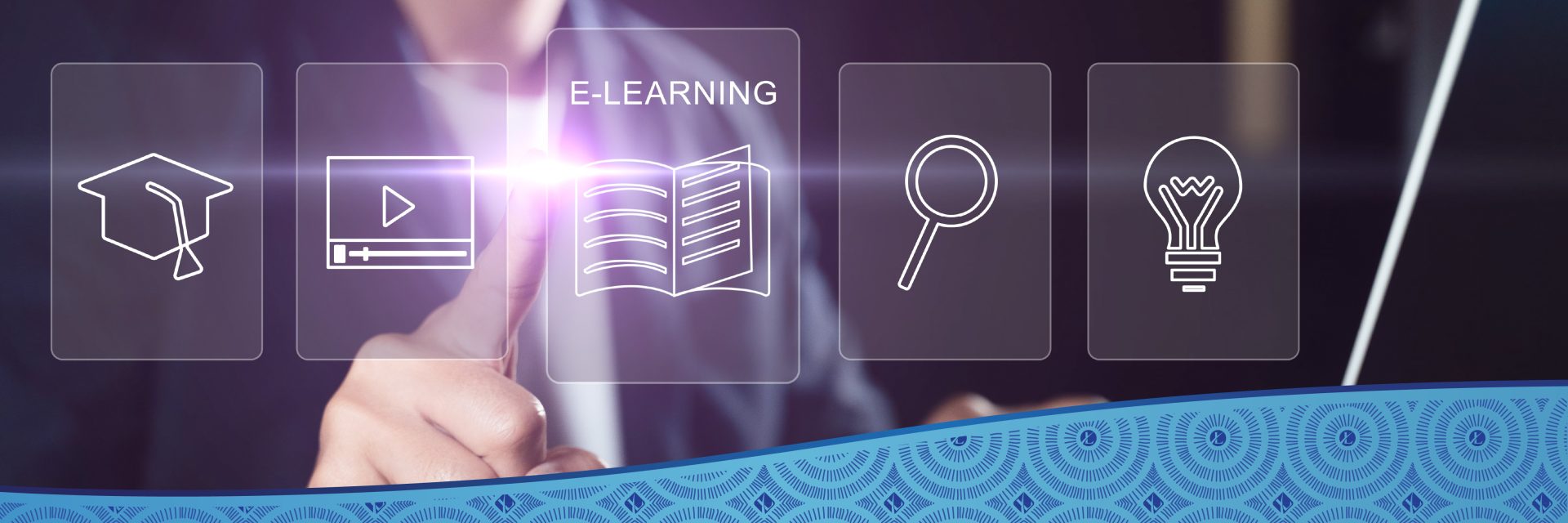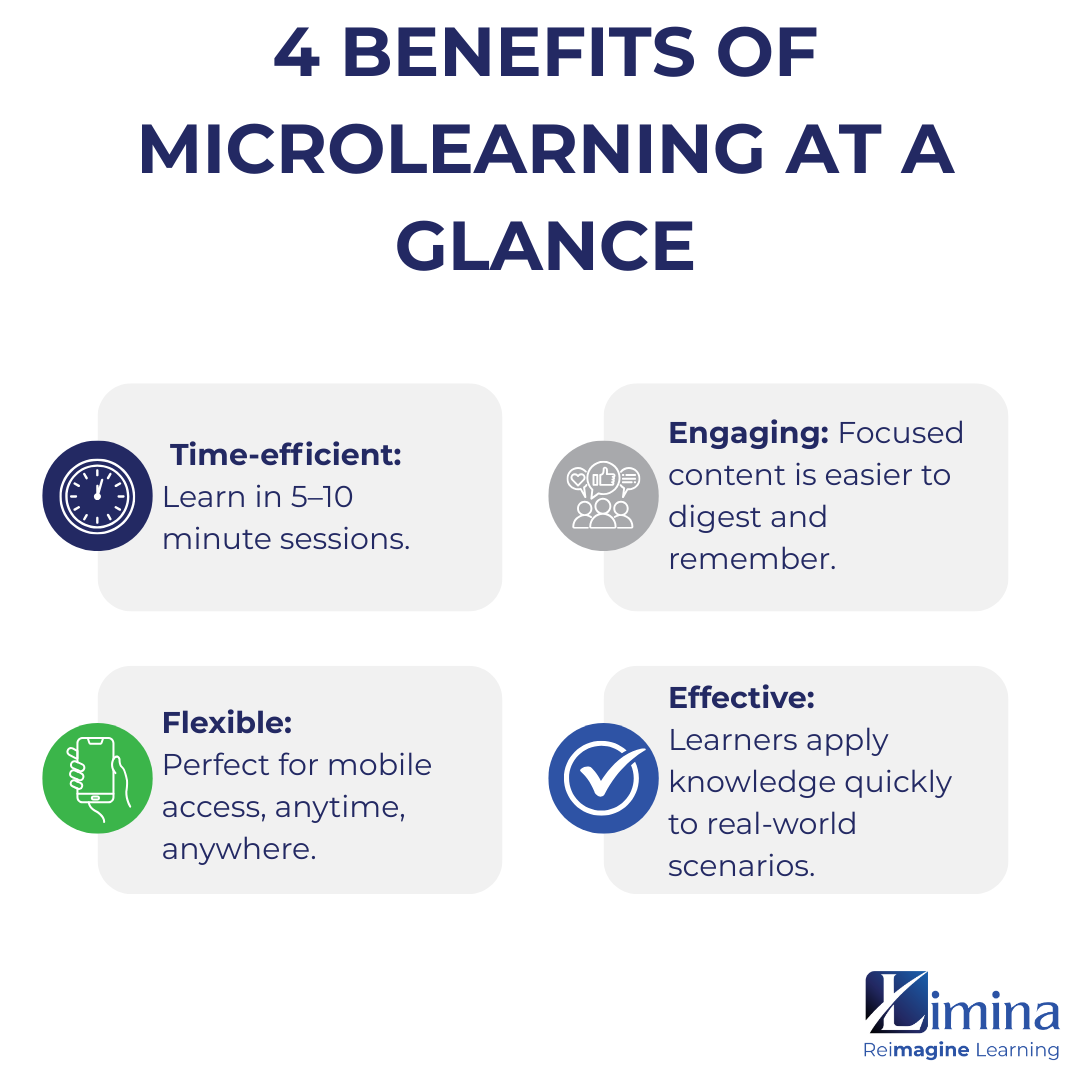
24 Oct Microlearning: When Less Is More
Microlearning: When Less Is More
Imagine trying to squeeze a lecture into the ten minutes you have before your next meeting, or revising a textbook chapter while you wait in the school pick-up line.
For most of us, learning feels like something that requires big chunks of time we rarely have. But, knowledge doesn’t always come in grand lessons. It can also happen in small, useful bursts. That’s the promise of microlearning: education that slips into the cracks of your day and keeps pace with the way we actually live.
Microlearning delivers knowledge in short, focused lessons that are easy to absorb and immediately useful. Whether it’s a quick video tutorial, an interactive quiz, or a bite-sized infographic, these lessons are designed to fit into your day.
Whether you’re a professional trying to stay ahead, a student balancing deadlines, or a lifelong learner chasing curiosity, microlearning makes growth feel within reach. Gone are the days of slogging through hours of material. Instead, you get the right insight, right when you need it. Learning shifts from being another chore on your list to something that slips naturally into your everyday life.
Why Microlearning Works
Microlearning’s impact is backed by solid research. The human brain processes information more efficiently when it’s broken into small, manageable chunks rather than overloaded in a single sitting. Research on cognitive load theory suggests that when we try to absorb too much at once, our brains become overwhelmed, leading to lower retention and increased frustration. Microlearning works because it aligns with how memory functions, using spaced repetition to reinforce key concepts over time. Instead of cramming large amounts of information in one go, learners revisit bite-sized lessons at intervals, helping knowledge stick more effectively.
Interestingly, the same principles that make microlearning effective are already being used in entertainment. Think about how platforms like TikTok, YouTube Shorts, and even Netflix structure content. Short, engaging clips hold attention better than long lectures, and algorithms reinforce learning by serving up related content at just the right time. Microlearning applies a similar strategy, using quick videos, quizzes, and interactive exercises to keep learners engaged without overwhelming them. The result is an experience that feels less like studying and more like natural, curiosity-driven exploration.
The link between entertainment and education shows that learning doesn’t need to feel dull or rigid. Think about how streaming services hook us with cliffhangers or gripping storylines. Microlearning works the same way, by weaving in storytelling, gamification, and real-world tasks. It transforms lessons into experiences you actually want to come back to. Picture learning a new language not by grinding through a heavy textbook, but through quick, lively conversations that mirror how we naturally pick up speech. When designed well, microlearning taps into the very triggers that keep us binge-watching or scrolling late into the night, only this time, the hours spent lead to growth instead of guilt.
Digital platforms have already changed the way we watch, read, and connect, so it makes sense that learning has to evolve too. Long lectures aren’t the only path to knowledge anymore. What people really need is the right piece of information, delivered at the right moment, in a way that feels natural and engaging. That’s where microlearning thrives. By combining insights from neuroscience with the pull of entertainment, it turns education into something that’s not only efficient, but enjoyable and open to anyone with a few minutes to spare.
Where Microlearning Shines
Microlearning’s real magic lies in how naturally it blends into everyday life. Picture this: it’s 8:45 a.m., and an employee is waiting for the kettle to boil. In those few spare minutes, they run through a short module on a new software tool, picking up exactly the tip they’ll need for the morning’s tasks. Later, just before a team meeting, they spend three minutes brushing up on a tricky policy update, which makes them walk into their meeting feeling prepared.
By lunchtime, learning doesn’t feel like an interruption. It’s just part of the rhythm of the day. On the commute home, that same employee opens a language app for a quick vocabulary drill or listens to a five-minute dialogue that makes progress feel doable. Even compliance training gets its moment, delivered not as a half-day slog but as a handful of practical, easy-to-absorb updates that slot into the workday without fuss.
That’s microlearning’s greatest strength: it transforms professional growth from something overwhelming into something that happens in the cracks of real life, creating small steps that add up to real confidence and lasting skills.
Getting Started with Microlearning
At Limina, we make educator training simple, engaging, and practical. Instead of long, overwhelming courses, we turn professional development into bite-sized microcourses that fit seamlessly into a busy day. Our approach breaks complex training into short, focused modules that are easy to access and immediately useful in the classroom. Whether for schools, institutions, or corporate training, we help organisations deliver professional development that actually works, saving time while making a lasting impact.
A Path to Lifelong Learning
Microlearning is a fundamental shift in how we approach education. It empowers learners to take control of their journey, making knowledge accessible, engaging, and relevant. It’s also a flexible and effective way to keep up with the demands of our rapidly changing environment. Whether brushing up on professional skills, tackling a new subject, or simply exploring a hobby, microlearning proves that sometimes, less is more.
The next time you have a few spare minutes, turn them into an opportunity to grow. Partner with us to revolutionise your training by providing learning that’s flexible, engaging, and designed for real-world impact. Learning doesn’t have to be a marathon; instead, it can be a series of sprints that get you exactly where you want to go.
By Chantal Tarling


